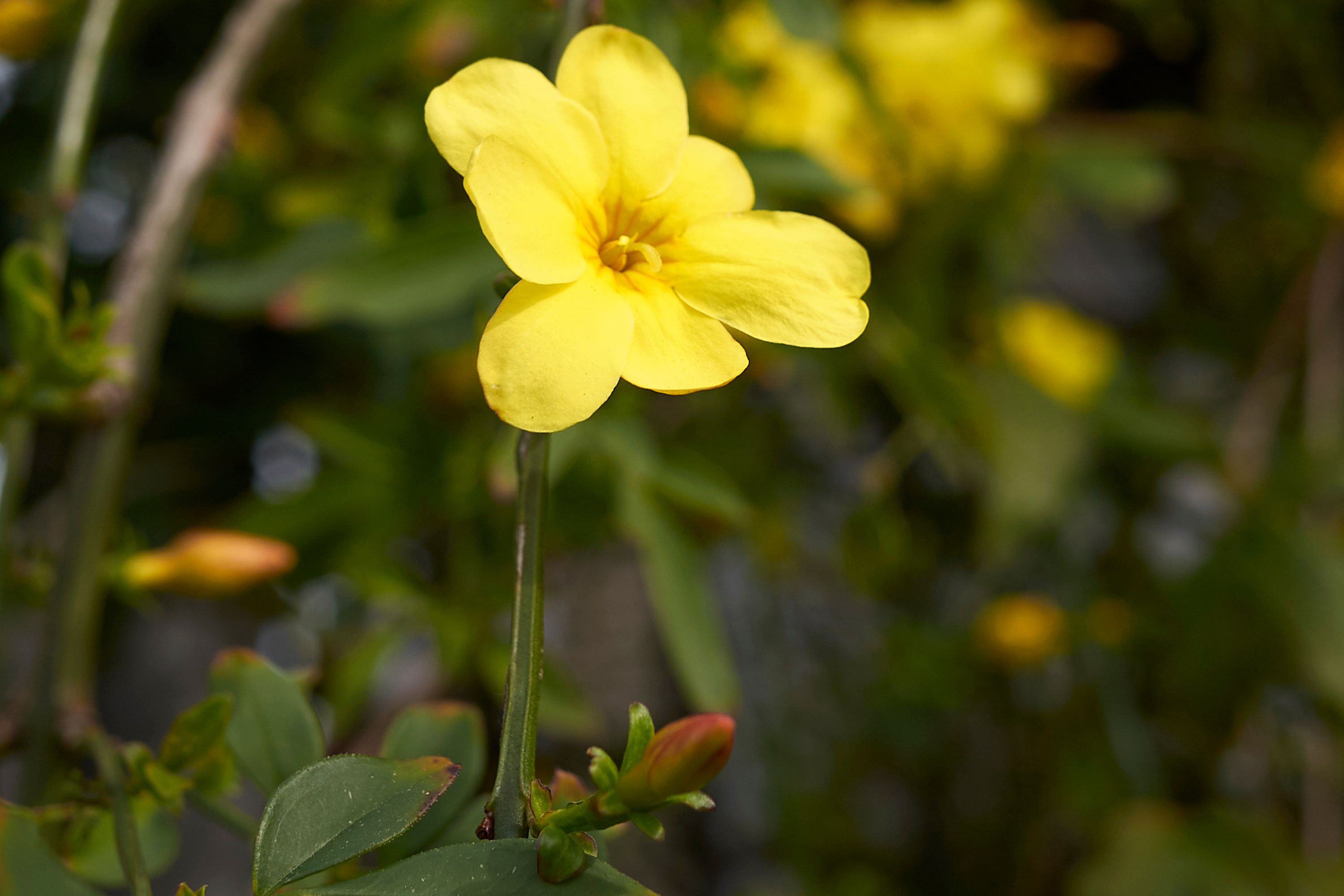Primrose jasmine
(Jasminum mesnyi)

Description
Jasminum mesnyi, the primrose jasmine or Japanese jasmine, is a species of flowering plant in the family Oleaceae, native to Vietnam and southern China (Guizhou, Sichuan, Yunnan). It is also reportedly naturalized in Mexico, Honduras and parts of the southern United States (Florida, Georgia, Alabama, Louisiana, Texas, Arizona). Jasminum mesnyi is a scrambling evergreen shrub growing to 3 m (10 ft) tall by 1–2 m (3–7 ft) wide, with fragrant yellow flowers in spring and summer. The form usually found in cultivation has semi-double flowers. It is not frost-hardy. With suitable support it can be grown as a slender climber, though in confined spaces it will require regular pruning. Jasmine (taxonomic name: Jasminum) is a genus of shrubs and vines in the olive family (Oleaceae). It contains around 200 species native to tropical and warm temperate regions of Eurasia, Africa, and Oceania. Jasmines are widely cultivated for the characteristic fragrance of their flowers. A number of unrelated plants contain the word "jasmine" in their common names (see Other plants called "jasmine"). Jasmine can be either deciduous (leaves falling in autumn) or evergreen (green all year round), and can be erect, spreading, or climbing shrubs and vines. Their leaves are borne in opposing or alternating arrangement and can be of simple, trifoliate, or pinnate formation. The flowers are typically around 2.5 cm (0.98 in) in diameter. They are white or yellow, although in rare instances they can be slightly reddish. The flowers are borne in cymose clusters with a minimum of three flowers, though they can also be solitary on the ends of branchlets. Each flower has about four to nine petals, two locules, and one to four ovules. They have two stamens with very short filaments. The bracts are linear or ovate. The calyx is bell-shaped. They are usually very fragrant. The fruits of jasmines are berries that turn black when ripe. The basic chromosome number of the genus is 13, and most species are diploid (2n=26). However, natural polyploidy exists, particularly in Jasminum sambac (triploid 3n=39), Jasminum flexile (tetraploid 4n=52), Jasminum mesnyi (triploid 3n=39), and Jasminum angustifolium (tetraploid 4n=52). Jasmines are native to tropical and subtropical regions of Eurasia, Africa, Australasia and Oceania, although only one of the 200 species is native to Europe. Their center of diversity is in South Asia and Southeast Asia.
Taxonomic tree:







